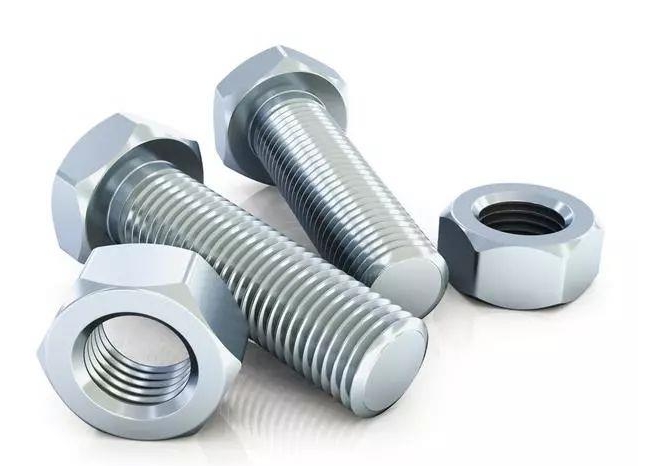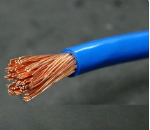Cold heading is a forging method that utilizes dies to upset and shape metal bars at room temperature, commonly used for manufacturing the heads of screws, bolts, rivets, etc. It can reduce or replace cutting processes. The materials for forging billets can include copper, aluminum, carbon steel, alloy steel, stainless steel, titanium alloys, and more. Cold heading is mostly performed on specialized cold heading machines, facilitating continuous, multi-station, and automated production. On these machines, processes such as cutting, heading, accumulation, forming, chamfering, threading, necking, and trimming can be sequentially completed.

Next, let's briefly introduce how to select raw materials for cold heading:
(1) According to the theory of metal plastic deformation, a certain pressure is applied to the metal billet at room temperature, causing it to plastically deform within the mold cavity to achieve the specified shape and dimensions.
(2) High-quality metallic materials with good plastic deformation properties must be selected, with strict standards for their chemical composition and mechanical properties.
(3) There are various models and series of cold heading machines for bolts and nuts, featuring reliable equipment performance, high efficiency, and stable quality.
(4) The forming process requires significant upsetting force, necessitating expensive power equipment.
(5) The workpiece has good surface quality and high dimensional accuracy due to cold work hardening during the upsetting process, limiting excessive deformation.
(6) Cold heading is suitable for mass production of workpieces of various specifications.
Factors to Consider in Selecting Raw Materials:
(1) Chemical Composition: Pure metals generally have better plasticity than alloys, as impurity elements often reduce plasticity. Different alloys have varying effects on plasticity.
(2) Metallurgical Structure: The nature, shape, size, quantity, and distribution of multi-phase structures impact plasticity differently. Defects like grain size, segregation, inclusions, bubbles, and porosity can reduce metal plasticity.
(3) Deformation Temperature: Plasticity increases with temperature, but this increase is not linear.
(4) Strain Rate: An increase in strain rate can both decrease and increase metal plasticity, depending on the combined effects of various factors.
(5) Deformation Mechanics: Compression strain favors plasticity, while tension strain is detrimental. Methods with three-dimensional compression or two-dimensional compression and one-dimensional tension significantly benefit metal plasticity.
(6) Other Factors: Metal plasticity can improve during discontinuous deformation, especially during thermal deformation of low-plasticity metals.
Features of Cold Heading Machines:
(1) High-wear-resistant alloy copper bushings connect the crankshaft, body, and impact connecting rod, ensuring high load capacity, long service life, and low maintenance costs.
(2) The body is made of ductile iron with added alloys, providing high tensile strength and wear resistance.
(3) A two-stage gear drive system ensures high transmission efficiency and torque.
(4) Equipped with pneumatic clutches and brakes to reduce motor power consumption.
(5) The cutting system uses a guide plate to drive the cutter bar, ensuring stable and balanced cutting force.
(6) Multi-station cold heading machines use open-close clamps for workpiece transfer, which can rotate or translate for better process arrangement.
(7) Equipped with variable frequency speed control for stepless speed regulation within a certain range.
(8) Fault detectors and safety protection devices automatically shut down the machine in case of malfunctions, protecting equipment and molds.
(9) Feed boxes are equipped with thrust devices to improve feeding accuracy.
(10) The lubrication system is designed for simplicity and efficiency, ensuring circulation and filtration while protecting punches and workpieces.
Image Source: Dongguan Jinda Machinery - Cold Heading Machine Equipment
Requirements for Raw Materials:
(1) Raw materials must undergo spheroidizing annealing to achieve a spherical pearlitic metallurgical structure.
(2) To minimize cracking and extend mold life, cold-drawn materials should have as low a hardness as possible to improve plasticity.
(3) Dimensional accuracy of raw materials depends on product specifications and process requirements; multi-station cold heading machines generally have lower requirements for necking and strong-necking dimensional accuracy.
(4) Surface quality should be free of scratches, folds, cracks, burrs, rust, oxide scale, pits, and other defects, with a dull, lubricated film.
(5) The total thickness of the decarburized layer in the radial direction should not exceed 1% of the raw material diameter.
(6) To ensure cutting quality during cold forming, the raw material should have a hard surface and a soft core.
(7) Raw materials should undergo cold heading tests, as cold work hardening increases deformation resistance. Low sensitivity to cold work hardening is desirable.
Lubricants for Cold Heading:
(1) Excellent extreme pressure lubrication, high-temperature resistance, extreme pressure wear resistance, rust prevention, and high-temperature oxidation stability improve workpiece accuracy and finish, prevent mold sintering, and are suitable for multi-station forming of standard and non-standard parts, including cold heading of stainless steel workpieces.
(2) Minimizes oil smoke and "floating mist," meeting strict requirements for multi-die press nut processing with strong-necking dies.
(3) Provides good processing performance for products with large deformation, such as hollow, high-strength bolts, sleeves, stainless steel hollow and semi-hollow rivets.
(4) Effectively protects punches and molds, extending their service life and reducing overall costs.
(5) Excellent heat dissipation prevents localized overheating of workpieces and molds during cold forming.
(6) High temperature resistance, low sludge generation, low odor and smoke, protecting the operating environment.
(7) Provides sufficient rust protection to meet inter-process rust prevention requirements.
(8) Suitable for demanding cold heading of stainless steel and carbon steel with large deformation.
In summary, adhering strictly to rules and regulations in the fastener manufacturing process can enhance efficiency and prevent accidents.





 Customer service 1
Customer service 1  Customer service 2
Customer service 2